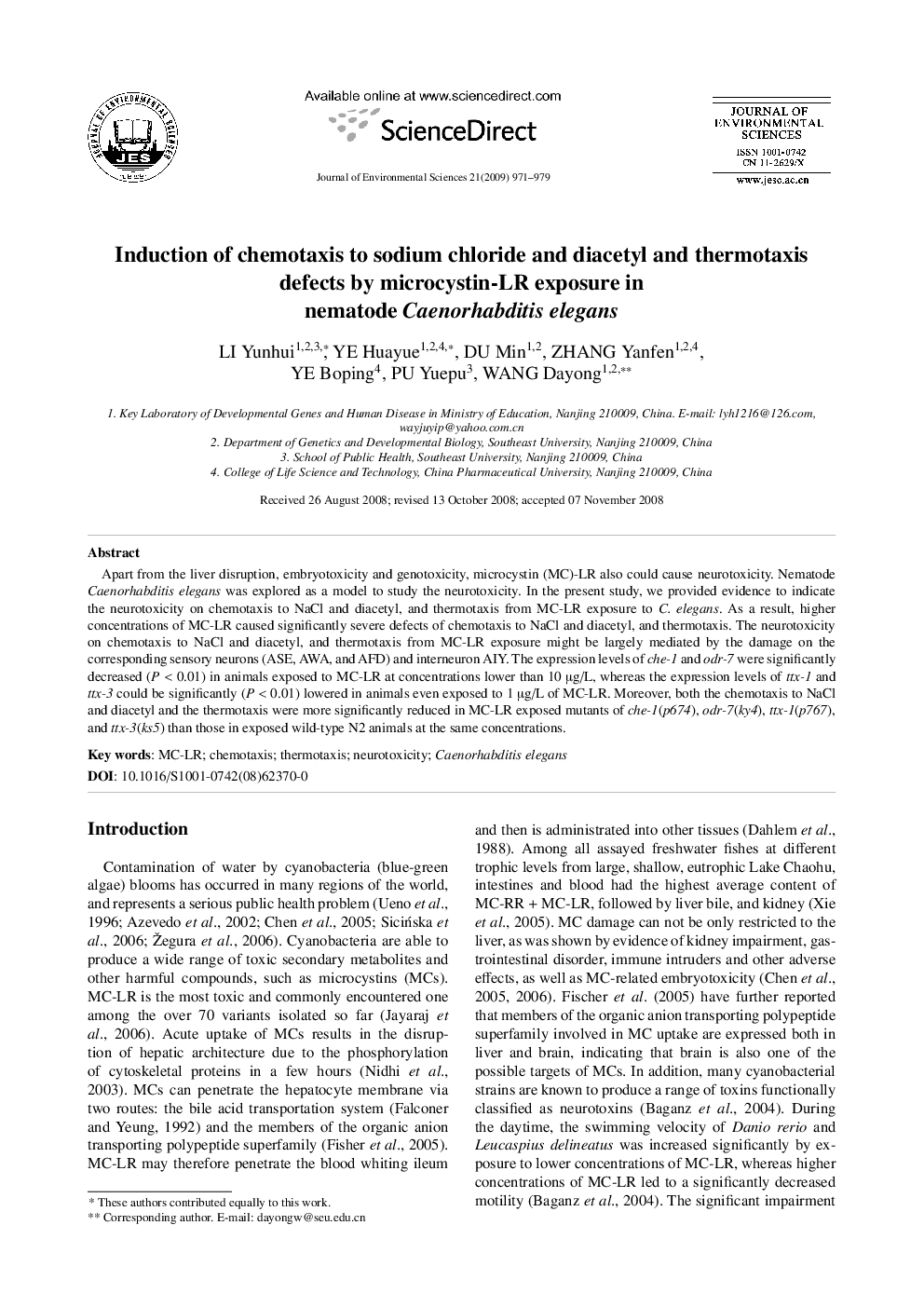| Article ID | Journal | Published Year | Pages | File Type |
|---|---|---|---|---|
| 4456258 | Journal of Environmental Sciences | 2009 | 9 Pages |
Apart from the liver disruption, embryotoxicity and genotoxicity, microcystin (MC)-LR also could cause neurotoxicity. Nematode Caenorhabditis elegans was explored as a model to study the neurotoxicity. In the present study, we provided evidence to indicate the neurotoxicity on chemotaxis to NaCl and diacetyl, and thermotaxis from MC-LR exposure to C. elegans. As a result, higher concentrations of MC-LR caused significantly severe defects of chemotaxis to NaCl and diacetyl, and thermotaxis. The neurotoxicity on chemotaxis to NaCl and diacetyl, and thermotaxis from MC-LR exposure might be largely mediated by the damage on the corresponding sensory neurons (ASE, AWA, and AFD) and interneuron AIY. The expression levels of che-1 and odr-7 were significantly decreased (P < 0.01) in animals exposed to MC-LR at concentrations lower than 10 μg/L, whereas the expression levels of ttx-1 and ttx-3 could be significantly (P < 0.01) lowered in animals even exposed to 1 μg/L of MC-LR. Moreover, both the chemotaxis to NaCl and diacetyl and the thermotaxis were more significantly reduced in MC-LR exposed mutants of che-1(p674), odr-7(ky4), ttx-1(p767), and ttx-3(ks5) than those in exposed wild-type N2 animals at the same concentrations.
